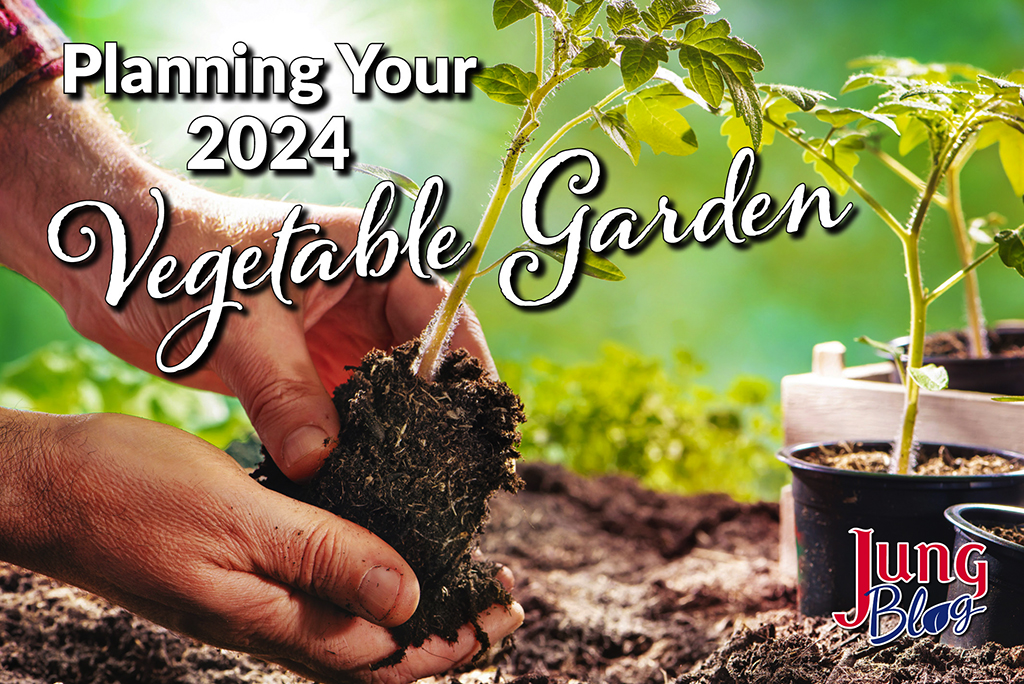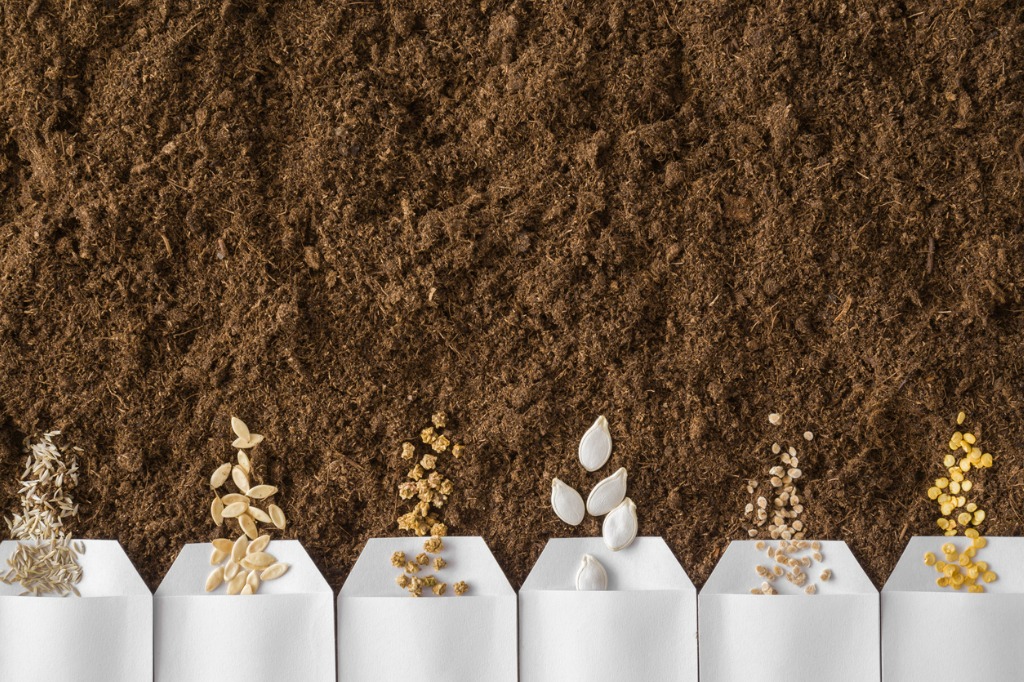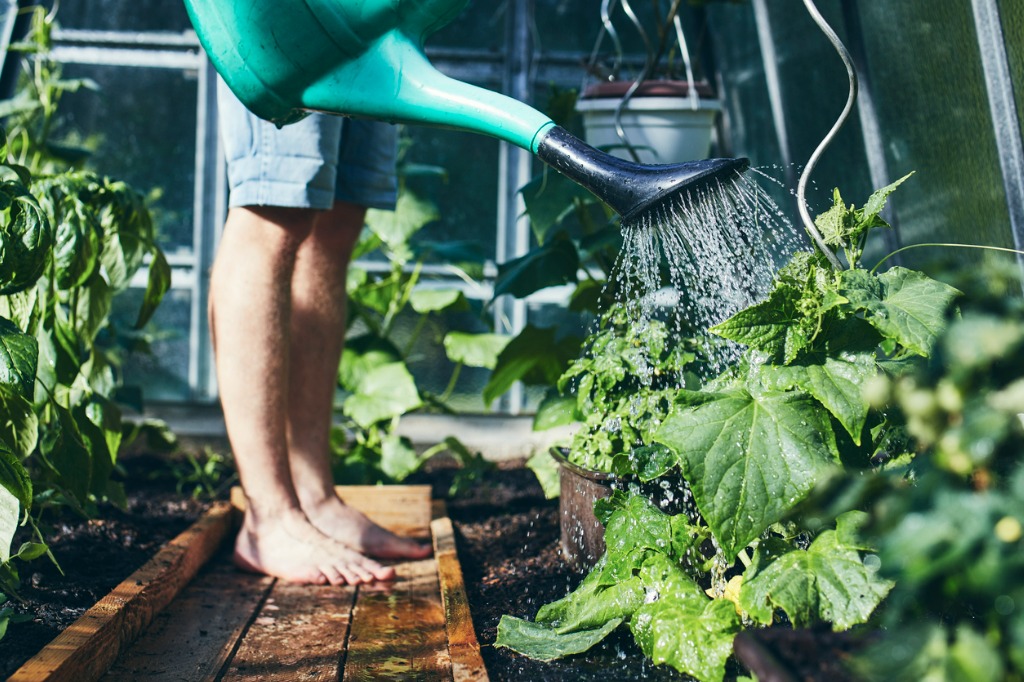
Updated: February 26, 2025
Where do I begin? We often hear this question from gardeners looking to grow vegetables for the first time. And with so much information at our fingertips, the process can feel overwhelming. Let’s take a few moments and explore the general steps to creating your first veggie garden.
What Should I Grow In My Vegetable Garden?

Create A Vegetable Favorites List
When I began vegetable gardening, I had a long list of things to grow, and the real challenge was knowing what I should grow with my limited space and experience. As you start planning, begin with a list of vegetables you would like to include in your garden. There is no need to worry about the length of the list, as we are just putting ideas on paper. A few easy crops to grow are tomatoes, lettuce, cucumbers, beans, onions, and potatoes. Remember that you can grow both cool-season and warm-season crops that will be planted and harvested at different times, allowing you to enjoy fresh produce for many months.
Garden Location Planning
Once you have made a list, consider your space and where you will grow these plants. You may have a patio with containers or a spacious yard with raised beds. Either way, keeping the garden small the first year is best since a vegetable garden requires consistent care from seed to harvest. As we become familiar with caring for the plants, it is easier to determine how large our garden should be and how much time we’re willing to commit to growing veggies.
Container Consideration
Whether growing in the ground or in containers, you have lots of flexibility in what to grow. In recent years, breeders have created many dwarf varieties of tomatoes that are perfectly sized for containers and provide high yields. And the same goes for other types of vegetables, like peppers and cucumbers. Most types of vegetables can be grown in containers, but certain crops will require larger pots, so give them plenty of space for roots to grow. For dwarf tomatoes, your pots should be at least 14” wide to accommodate the root system.
Raised Beds
For raised beds, you will want to consider how much space you have as you decide what varieties to grow, as some plants can grow massive while others take up little space. Crops like tomatoes, cucumbers, peppers, and squash tend to grow larger, while leafy greens and root crops remain smaller.
Remember the Soil Is Critical To Success

Soil is the foundation of a vegetable garden, so before we add plants, let us ensure the soil is ready for them. An ideal soil will retain water and nutrients but also have good drainage. If you’re growing in containers, the best option is to purchase potting mix from the garden center, as regular garden soil will cause drainage problems in a pot. As a bonus, many potting mixes contain fertilizer that will help feed your plants as the season progresses.
Raised Bed Soil
For raised beds, you will want to purchase topsoil from a reputable nursery or soil supplier to get a product with good structure and plenty of organic matter. If you plan to grow veggies in your existing soil, a soil test is the perfect way to determine if you should add amendments, such as organic matter. Soil with high amounts of clay can be amended with compost to promote better drainage. And for sandy soils, that compost will retain water and nutrients, leading to vigorous and productive plants. When it comes to soil, a loamy structure will provide a balance of sand, clay, and silt that promotes the right amount of water and nutrients.
Sunlight & Water Requirements For Your Vegetable Garden

Sunlight
Most vegetables require full sun to thrive, except for leafy greens and others that can tolerate part shade. With full sun, vegetables have higher yield and fewer disease problems if given proper care.
Water
The most critical aspect of growing vegetables is water, as too little or too much can majorly impact the crop. As we discussed earlier, soil plays a crucial role in determining your water needs, as good soil will retain water but also drain well.
Vegetables will thrive on about 1″ of water per week. Still, it is hard to know when they have received that amount, so consider adding a rain gauge to the garden or stick your finger a few inches deep in the soil to see if it’s moist. The soil should always be moist but not wet. If the top few inches of soil are dry, it’s time to water.
As the plants become established, they should require less water from us but may need extra help during times of drought.
We can irrigate vegetables in various ways but always remember to water the base of the plants and keep the leaves dry to reduce disease problems down the road. This rule is especially vital for tomatoes, which can be prone to fungal issues on their leaves. Some gardeners use a drip irrigation system to water their vegetables, while others use a hose with a wand. Either way, it’s best to focus on watering the roots.
Location & Spacing Of Plants

The placement of our vegetables will determine how large they grow and the overall health of the plants. As we choose a garden site, having a nearby water source is crucial, as veggies require plenty of water to get established. And those six hours of direct sunlight are also needed. If you are unsure how much sun is received in your potential site, spend a summer observing how much light hits the space before installing the garden.
Larger crops, like squash, pumpkins, and tomatoes, will require several square feet of space for a single plant, while smaller crops can be grown within a few inches of each other. We also should consider how to arrange vegetable plants in the garden to maximize sunlight, as taller crops can shade the shorter ones. Plants that are spaced too close together will receive less sunlight and are prone to disease issues.

A vegetable garden has its share of challenges, but the reward of harvesting homegrown veggies far outweighs the problems. As the years continue, the learning never ends, and you will be able to share your successes and challenges with new gardeners as they begin their journey.
Other Recommended Reading

- A Gardener’s Guide To Plant Nutrition
- Growing Vegetables Indoors From Seed
- 7 Heart-Healthy Foods You Can Grow
- Grow A Vertical Vegetable Garden
- 22 Easy To Grow Vegetable Seeds
At Jung Seed Co, we strive to be your go-to guide for all your gardening needs. Our YouTube channel The Garden Doctor by Dick Zondag is where he provides gardening tips for all levels of gardeners. When you need reliable gardening advice, turn to the trusted experts at Jung.
View our new catalog online or browse our website for your gardening favorites. To receive info on new products, exclusive deals, and specials, be sure to sign up for our weekly email. Join our Facebook page, to discuss all things gardening!
About the Author: Matthew Olson is a professional horticulturist and garden writer. He has a bachelor’s degree in horticulture from UW-River Falls and is a certified professional with the Minnesota Nursery and Landscape Association. His enthusiasm for plants and the outdoors brought him to the green industry. He regularly writes articles about gardening for both gardeners and industry professionals. He can be reached at matt@mattolsonhorticulture.com.